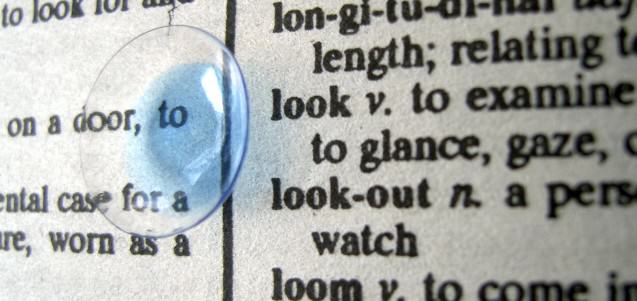Contact lenses
At the Amigó Ophthalmological Institute you will only pay for your contact lenses once they are the most suitable type for you and the contact lens specialist is sure their adaptation is optimal, offering adequate comfort and vision.
| Unlike glasses, contact lenses rarely fall from the eyes; they allow sporting activity and improve one’s appearance. They are also better than glasses in most aspects regarding visual quality and field. With the great range of lenses available, almost any motivated patient of any age can use them provided due attention is paid to certain specific eye problems. | If you are thinking of wearing contact lenses, the first step is to arrange an appointment for contact lens adaptation with our specialist at the institute. After the ophthalmological check-up, if your eyes are healthy and you are willing, adaptation can be carried out to determine which type of lenses are best suited to you. For this, we have special equipment to guarantee perfect adaptation. |
What are contact lenses and who can use them?Contact lenses are corrective or cosmetic lenses placed over the lacrimal layer that hydrates and lubricates the cornea (transparent covering of the pupil at the front of the eye). These are medical devices that need to be used and handled correctly so as not to interfere in the physiology of the eye. Contact lenses users should have check-ups to ensure safe and effective long-term use. A diferencia de las gafas, las lentes de contacto es muy raro que se caigan, permiten la practica deportiva, mejoran la estética, mejoran el campo visual y mejoran la visión comparada con gafa en muchos casos. Unlike glasses, contact lenses rarely fall from the eyes; they allow sporting activity and improve one’s appearance. They are also better than glasses in most aspects regarding visual quality and field. With the great range of lenses available, almost any motivated patient of any age can use them provided due attention is paid to certain specific eye problems. If you are thinking of wearing contact lenses, the first step is to arrange an appointment for contact lens adaptation with our specialist at the institute. After the ophthalmological check-up, if your eyes are healthy and you are willing, adaptation can be carried out to determine which type of lenses are best suited to you. For this, we have special equipment to guarantee perfect contact lens adaptation. |
What does adaptation involve?Contact lens adaptation is a process that must be performed thoroughly to avoid possible future complications. The first step is the ophthalmologist’s initial recommendation that they are in fact suitable for a particular patient. Next, the contact lenses expert at the clinic will speak to you about your eyes and general health. They will ask about your motives for seeking contact lenses, your expectations from them and will evaluate your eye characteristics (dryness, corneal diameter and curvature). With this information they can prepare and adapt trial lenses. It is very likely you will need to try more than one pair of contact lenses before finding the most suitable; this should not worry you since the adaptation process is free and you will only be charged for the definitive pair of lenses. That is once our expert is sure the adaptation, comfort and vision are optimal. Inserting and removing contact lensesIt is simple to learn to put in and take out the lenses. Most people acquire the ability quickly; even children, the elderly, and nervous people are sure to master it in a week. The care of the lenses requires at least 5 minutes a day. Re-usable lenses and their containers have to be cleaned and disinfected. If they are adequately washed and rinsed, 95% or more of the bacteria are removed. |
How many hours a day can they be used?This can vary from a few hours to all day, as established in the instructions for use and care of the lenses. It depends on the physiology of your cornea, the contact lens material and finally the length of time you wish and are able to use them. It is important to comply with the stipulated hours to avoid future complications. How often must they be changed for new ones?The replacement time varies from one day for disposable lenses (use and discard without the need for cleaning or solutions) through weekly, fortnightly, monthly, quarterly, six-monthly to yearly renewal. Each possible duration has its pros and cons, although daily or monthly replacement regimes are the commonest. The other periods of use are employed for specially designed and fitted for requirements outside the usual range. What risks are entailed?Although soft contact lenses afford many benefits to the users, difficulties may possibly arise. At the IOA we consider the health of your eyes first and foremost, therefore any unforeseen development or discomfort derived solely from contact lenses used by our patients will be followed up by one of our doctors without extra cost. |
Treatments using contact lenses:
Contact lenses are recommended to correct common refractive defects:
- SHORT
- LONG SIGHT
- ASTIGMATISM
- PRESBYOPIA (bifocals and multifocals).
They are also indicated in many other more clinical situations:
|
|

